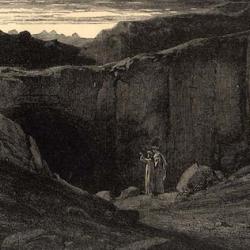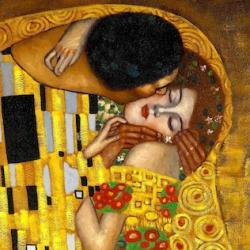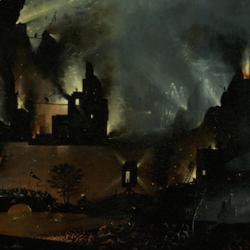In a contribution to Petrarch: A Critical Guide to the Complete Works Teodolinda Barolini contrasts the love poetry of Petrarch’s Rerum vulgarium fragmenta (also known as the Canzoniere) with that of Dante.
Petrarch continues the courtly paradigm. His interest is in the shifting psychology and drama of the male lover. His beloved Laura (if she was real) is abstracted, and serves “as foil to the male lover/poet but not as a subject with her own inner life and moral choices.”
In this way, Petrarch depart from the achievement of Dante: “Petrarch forged his identity against Dante’s by going back to the courtly paradigm that Dante inherited, theologized, and then ultimately abandoned; Petrarch’s reinstitutionalizing of the courtly paradigm had specific repercussions with respect to the construction of gender in the Italian tradition. Dante constructs women as moral agents in the Commedia and even before, already moving away from the courtly paradigm in which women exist only as projections of male desire in moral canzoni like Doglia mi reca nello core ardire, whose women possess desires of their own and are full interlocutors who require instruction in moral matters. Petrarch, by contrast, did not write vernacular poems like Dante’s Doglia mi reca, in which Dante addresses women directly; Petrarch’s moral poems, political poems, and poems of friendship address men rather than women. He does not show the commitment to female historicity and selfhood that we find in Dante. Therefore, when we speak of the psychological richness that is dramatized in the Fragmenta, we are speaking exclusively about the male lover/poet, as is typical in the courtly tradition” (34).
While Dante is ultimately able to reconcile his love for Beatrice with love for God, Petrarch struggles inconclusively with earthly and heavenly desires. The last word is instability: “The issue of whether and when the poet will ever achieve a ‘conversion\’ away from Laura to God—there are some poems in which his love for Laura is viewed as a means to reach above the immanent to the transcendent, like Dante’s love for Beatrice, but there are others in which such love for a fellow human being, even Laura, is viewed in a negative light as a distraction from loving God—has divided critics. Some read the collection as dramatizing an achieved conversion. Others, including the author of this essay, do not, for instability is at the core of this work: thematically, psychologically, and as we shall see, textually and materially” (35).
The instability of Petrarch’s resolution of this struggle points to what Bardolini considers the critical theme of the collection of poems: Time. As she writes, the theme is “the self’s metamorphic existence in the labyrinth of time.” More fully, “Time, therefore, comports difference, change, instability, absence of identity, oneness, and being: Petrarch’s chosen themes. Hence, although it is not usual to associate Petrarch’s lyric sequence, consisting mainly of love poetry, with a philosophical text like Aristotle’s Physics, it is appropriate: time is a philosophical—indeed, a metaphysical—problem, and to the degree that time is the chief focus and concern of his poetry, Petrarch is a metaphysical poet. Metaphysical concerns, defined as first principles and ultimate grounds, such as being and time, are Petrarch’s abiding concerns. The problems that tugged at him ceaselessly—in particular, the nature of time and the existence of the self in time—are metaphysical in nature, and these are the problems that he dramatized in his work” (33-4). For the first time, time, she argues becomes the “protagonist of this book of poetry” (43).
And this concern with the fragile temporality of human life gives a unique character to the depiction of his beloved Laura: “Petrarch’s Laura does what no stilnovist or Dantean lyric love lady had done before her—she ages.” Even this particularizing maneuver is turned to the purposes of the male-centered courtly paradigm. As Laura ages, she becomes “a catalyst for the discourse of time, change, and multiplicity. The ‘I’ and his memories and his thought processes are the poem’s true subject; the lady—evanescent, transient, mortal—is the vehicle for catching the ‘I’ in the process, catching him in the web” (49).















